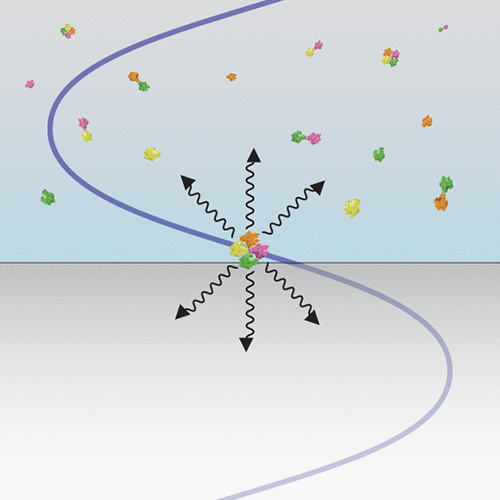当前位置:
X-MOL 学术
›
Chem. Rev.
›
论文详情
Our official English website, www.x-mol.net, welcomes your
feedback! (Note: you will need to create a separate account there.)
Scattering-based Light Microscopy: From Metal Nanoparticles to Single Proteins
Chemical Reviews ( IF 51.4 ) Pub Date : 2021-09-29 , DOI: 10.1021/acs.chemrev.1c00271 Lee Priest 1 , Jack S Peters 1 , Philipp Kukura 1
Chemical Reviews ( IF 51.4 ) Pub Date : 2021-09-29 , DOI: 10.1021/acs.chemrev.1c00271 Lee Priest 1 , Jack S Peters 1 , Philipp Kukura 1
Affiliation

|
Our ability to detect, image, and quantify nanoscopic objects and molecules with visible light has undergone dramatic improvements over the past few decades. While fluorescence has historically been the go-to contrast mechanism for ultrasensitive light microscopy due to its superior background suppression and specificity, recent developments based on light scattering have reached single-molecule sensitivity. They also have the advantages of universal applicability and the ability to obtain information about the species of interest beyond its presence and location. Many of the recent advances are driven by novel approaches to illumination, detection, and background suppression, all aimed at isolating and maximizing the signal of interest. Here, we review these developments grouped according to the basic principles used, namely darkfield imaging, interferometric detection, and surface plasmon resonance microscopy.
中文翻译:

基于散射的光学显微镜:从金属纳米颗粒到单一蛋白质
在过去的几十年里,我们利用可见光检测、成像和量化纳米级物体和分子的能力取得了巨大的进步。虽然荧光由于其卓越的背景抑制和特异性而历来成为超灵敏光学显微镜的首选对比机制,但基于光散射的最新发展已经达到了单分子灵敏度。它们还具有普遍适用性的优点,并且能够获取有关感兴趣物种的存在和位置之外的信息。最近的许多进展都是由照明、检测和背景抑制的新颖方法推动的,所有这些都旨在隔离和最大化感兴趣的信号。在这里,我们根据所使用的基本原理(即暗场成像、干涉检测和表面等离子体共振显微镜)分组回顾这些进展。
更新日期:2021-10-13
中文翻译:

基于散射的光学显微镜:从金属纳米颗粒到单一蛋白质
在过去的几十年里,我们利用可见光检测、成像和量化纳米级物体和分子的能力取得了巨大的进步。虽然荧光由于其卓越的背景抑制和特异性而历来成为超灵敏光学显微镜的首选对比机制,但基于光散射的最新发展已经达到了单分子灵敏度。它们还具有普遍适用性的优点,并且能够获取有关感兴趣物种的存在和位置之外的信息。最近的许多进展都是由照明、检测和背景抑制的新颖方法推动的,所有这些都旨在隔离和最大化感兴趣的信号。在这里,我们根据所使用的基本原理(即暗场成像、干涉检测和表面等离子体共振显微镜)分组回顾这些进展。











































 京公网安备 11010802027423号
京公网安备 11010802027423号